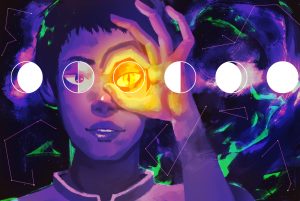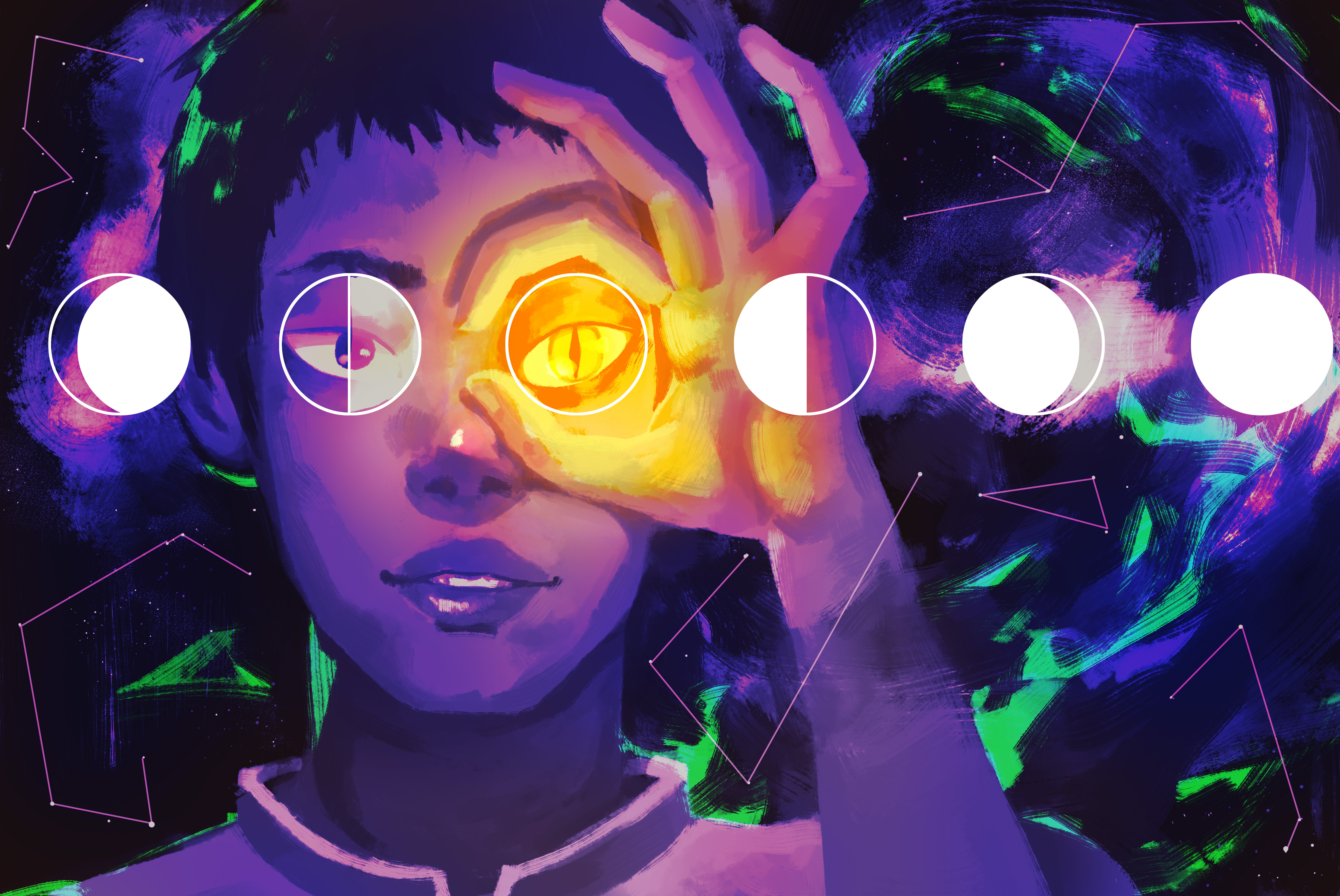An essay by Anneke Halim, as provided by S. Qiouyi Lu
Art by America Jones
The publication of the Journal of Interplanetary Lycan Studies is an opportune time to reflect on the history of our field and what we already know. Although lycans have existed in the histories of all human civilizations and have indeed been embraced in many communities, the rise of European colonialism in the 16th century spread lycanthrophobia worldwide, suppressing many lycan-oriented institutions around the globe. Asylums became the standard “treatment” for lycans; research on lycanthropy was forbidden. Lycans would not begin to regain basic rights until mass decolonization in the 20th century, and although lycan studies arose around that time, the field remained small until midway through the 20th century. At the same time, research on outer space began to take off. It took the space race of the 1950s and various concurrent movements to depathologize lycanthropy for lycans and non-lycans alike to unite to understand the factors that contribute to lycanthropy.
Lycans were one of the first to show enthusiasm over space travel: lycans, after all, are fascinated with celestial objects. When NASA launched the Apollo moon program, so many lycans did not shrink from the dangers and uncertainties of such a journey, but instead tried to sign up to be a part of the program. In the 1960s, though, lycanthropy was still considered a disqualifying condition for space travel. Concerned about the safety of non-lycan astronauts, NASA banned all lycans from space travel. Despite protests from lycan activists and their supporters, Apollo 11 was launched in 1969 with no lycans aboard.

In 2093, Themba Adebayo led a majority-lycan crew to Mars and discovered that neither the Martian moon Deimos nor the Martian moon Phobos triggered any metamorphosis of the crew members.
To read the rest of this story, check out the Mad Scientist Journal: Summer 2017 collection.
Anneke Halim is an assistant professor in the department of interplanetary lycan studies at UC Berkeley. E received eir BS in astronomy from UCLA and eir Ph.D. in interplanetary lycan studies from Caltech. Eir work investigates the degree to which the solar reflectivity of moons affects lycanthropic symptoms. Outside of research, Dr. Halim volunteers with Spacewolves, a nonprofit dedicated to empowering future generations of lycan students to pursue interplanetary lycan studies.
S. Qiouyi Lu is a writer, artist, narrator, and translator; their stories have appeared in Strange Horizons and Daily Science Fiction. A dread member of the Queer Asian SFFH Illuminati, S. currently lives in Columbus, OH, with a tiny black cat named Thin Mint. Visit their site at s.qiouyi.lu or follow them on Twitter as @sqiouyilu.
AJ is an illustrator and comic artist with a passion for neon colors and queer culture. Catch them being antisocial on social media @thehauntedboy.
“Introduction to the Journal of Interplanetary Lycan Studies, Volume 1, Issue 1” is © 2017 S. Qiouyi Lu
Art accompanying story is © 2017 America Jones
